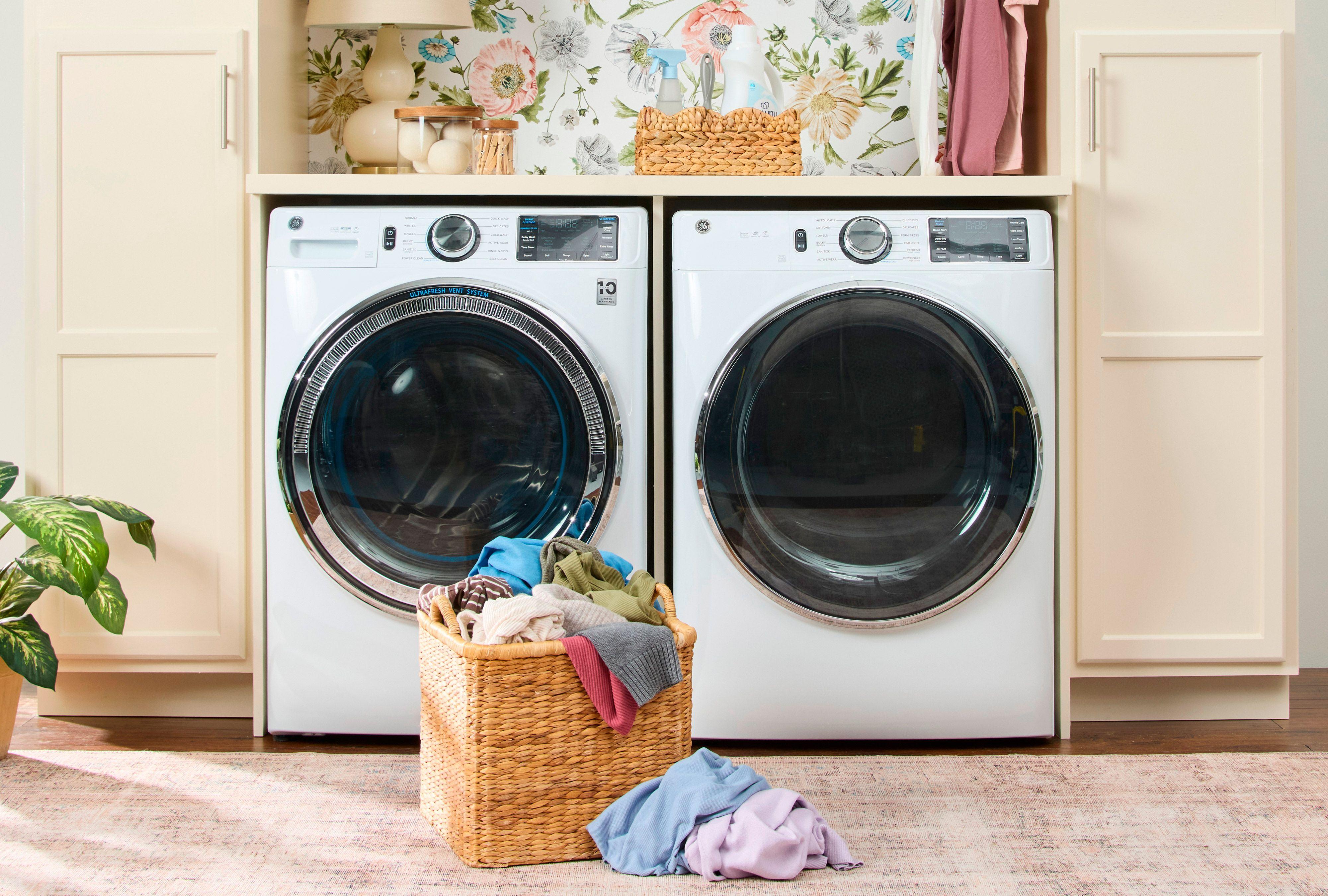We’ve all been there. You’re walking through your house and suddeny, “What’s that smell?” If you were me last weekend, it was the washing machine. A serious, strong rotten egg smell was coming from the machine. After a quick inspection, I figured out that my issue wasn't the drum (which can also harbor odors) but the back, near the drain pipe, which is nearly impossible to reach. Thankfully, I found several fast and easy solutions for getting rid of the smell fast.
Why Washing Machines Start to Smell
Washing machine smells can come from a number of places. The warm, damp environment of the actual drum is the ideal ground for mold and bacteria to grow, especially in front-loaders with rubber seals. Leftover detergents, fabric softeners, and dirt and lint make it even worse. On top of that, and in my case, your actual water could be part of the problem.
That “rotten egg”smell could actually be hydrogen sulfide gas that’s built up in you machine. Over time, leftover detergent, dirt, and lint can stick to the drum, gasket, and hoses, which creates a slimy film that stinky bacteria love. When the moisture gets trapped inside (especially in the hoses) the bacteria break down the organic matter in the residue, producing hydrogen sulfide gas, which smells like—you guessed it—rotten eggs.
If the water can’t drain completely, it becomes stagnant, which amplifies the smell. That said, you don’t need to worry about build-up: It’s not that sulfur “builds up” like scale or minerals—rather, bacteria feed on residues and trapped water, creating a sulfur-smelling gas inside the washer or the tubes.
Related
John Merkl
How to Eliminate the Odor
Depending on the severity of the smell, there are a number of ways to eliminate it. You can start with a basic cleaning cycle, or give your washer a full scrub-down (pipes and all) for the freshest clean. When you're done, remember to keep up with regular cleaning maintenance to prevent the smell from coming back.
Run a Cleaning Cycle
The easy solution: run a cleaning cycle. Use a hot cycle with no laundry, with either 2 cups of white vinegar or 1 cup of baking soda, or a cup of bleach. Run the cycle normally. Afterwards, run a regular rinse cycle with just water to flush out any bleach that might have been left in the wash.
Do NOT use the vinegar and bleach together as this combination can create a very harmful gas.
Clean the Door Seal and Dry Thoroughly
The next step is for front loaders: pull back the rubber door seal and wipe out any sludge, lint, or moisture with a vinegar-water solution. Dry thoroughly. Top loaders: leave the door open to let the machine dry out completely. Consider leaving the door open at all times to prevent this from happening again.
Check the Drain Pump Filter
When you have the time and energy, the next task gets a little grimy. Put on some rubber gloves and check the drain pump filter (usually behind a small door at the bottom of the machine). Clean out any lint, hair, or residue and ensure and check to make sure the hose isn’t kinked or clogged.
Perform Maintenance Cleaning to Prevent Future Odors
In the future, run a monthly maintenance wash with hot water and vinegar (or a washing machine cleaning tablet) to prevent the issue from arising again. Also, make sure to always remove wet clothing immediately after washing, and keep the door open when the machine is not in use to prevent bacteria from building up.



